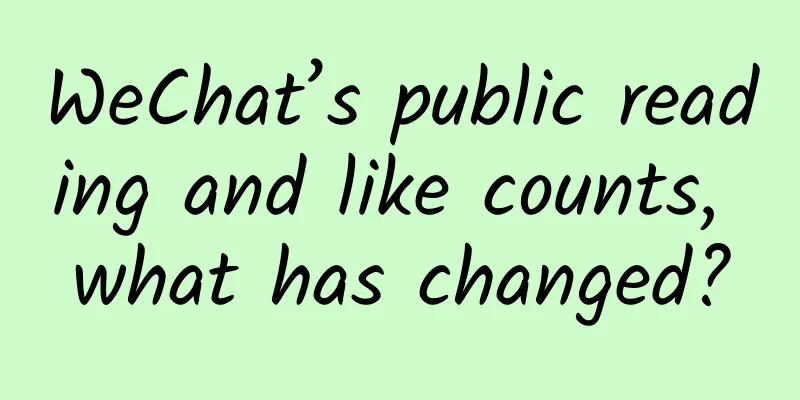What are we looking forward to about 5G?

|
As the lights came on, a crimson cleaning car was sweeping the streets. He complained as he moved, "I'm the only one working overtime again, so boring!" The street lamp in front of the building happened to hear this and comforted him, "I'm working overtime too!" The circular camera installed on the lamppost noticed that the traffic light in the distance was slacking off, and the traffic light immediately changed color to refute, "Don't you see? I'm busy here too?" At this time, the faucet hidden in the roadside flowerbed detected that the air humidity was insufficient, and automatically opened the valve to spray water into the air, and did not forget to joke with colleagues, "Everyone, please calm down!" "Latest news, it's going to snow tomorrow!" The silent bulletin board suddenly broadcast the weather. The street lights, traffic lights and cameras, which had been angry at each other, suddenly cheered with joy. Only the cleaning truck was still unhappy, saying helplessly: "I hate snow!" Just like a scene in the movie "Night at the Museum", at midnight, all the collections in the museum come to life, chatting, playing, and playing pranks. This short video released by Qualcomm, an American company, creates a fantasy metropolis of intelligent interconnection. The cool metallic tones are very futuristic. In the metropolis, all devices, big and small, have their own lives, with emotions, good and evil. At the beginning of the video, there are two lines of subtitles in the lower right corner, saying that the content of the video is "a future concept based on Qualcomm's basic technology, and all devices are derived from ideal imagination." In other words, the basic technology that supports these smart devices not only appears in science fiction movies, but also exists in the laboratories of technology companies such as Qualcomm, and is likely to become a part of our lives in the near future. This basic technology is 5G communication technology. The short film shows a corner of a smart city through collaborative road equipment. In addition, what other imaginations can 5G technology bring to smart cities? Smart Cities in the 5G Era When driving on the roads of a smart city, the smart transportation system will provide you with road information, corresponding warnings, and the best travel routes based on real-time road conditions such as weather, congestion, and traffic accidents. The traffic intelligence system is monitoring the flow of vehicles and people 24 hours a day, optimizing the city routes by adjusting the duration of traffic lights, etc. After successfully arriving at the destination, the city's intelligent parking service will also search for all available parking spaces nearby at suitable prices for you. The street lamps on both sides of the street are equipped with intelligent lighting systems that can adjust the brightness according to the solar terms and time. The trash cans in the corners are equipped with automatic detection and sorting programs, which can efficiently separate different types of waste and achieve optimized recycling. You have never been to this street. If you want to quickly find the building you want to go to, you can use smart glasses to call up the map navigation. If you are not in a hurry and want to take a leisurely stroll to understand the local style, the history, materials, overall structure and even safety factor of each building will be integrated and appear in front of you. After a busy day, you come home and check the food types, expiration dates, and sources in the refrigerator on the LCD screen while looking up corresponding recipes to prepare dinner. In addition, you can also use the remote control system to quickly make the washing machine run automatically and the oven and stove lights clean automatically. While waiting for dinner to be cooked, you received a discount product information. This is tailored for you by the smart shopping system based on your consumption habits, preferences, physical condition and other information. You remembered that you had an appointment with your good friend to go shopping on the weekend, but something happened and you couldn't make it. So, you changed your shopping from offline to online. You tried on clothes together in front of the mirror at home and commented on each other. You have been feeling fatigued recently, so you made an appointment to see a doctor on the weekend through the smart medical platform. On this platform, you have your own health record, including detailed information such as body temperature, heart rate, blood pressure, blood sugar, etc. If it is inconvenient to go out, you can also choose to see a doctor remotely. Internet of Vehicles, smart homes, telemedicine... As important components of smart cities, there are tens of thousands of devices connected to the network, thus forming an Internet of Things where "everything is connected". The Internet of Things is one of the foundations for the realization of smart cities. How can we achieve the "interconnection of everything"? What is the path to a smart city? It is 5G communication technology. From the birth of the world's first telephone in 1875, to the appearance of the world's first mobile phone in 1973, to the advent of the first smartphone in 2007, during this period of communications industry history, both the development of communications technology and the advancement of mobile terminals have revolved around communication between people. At that time, the communication needs between people had not been fully met, and the connection needs between people and things, and things and things were placed in a secondary position. This situation has been improved with the perfect deployment of 3G and 4G cellular networks and the development of industrialization, automation, and intelligent technologies. Today, existing communication systems can already meet the daily needs of interpersonal communication. People are becoming more aware of the functions and intelligence of "things", and their reliance on "things" is gradually deepening. The 5G era means that communication between people is expanding to people and things, and things and things, ultimately realizing the "interconnection of all things". 5G and diverse application scenarios More than a decade ago, mobile phones could only make calls and send text messages, and only later did they support Internet access. If the Internet speed can reach around 30~40kbit/s, it means that your mobile phone is already very advanced. Nowadays, the popularity of smart terminal users and the rapid development of mobile Internet have led to tremendous changes in people's lives and information interaction. On 5G smart devices, new services such as augmented reality (AR), virtual reality (VR), ultra-high-definition video, and mobile cloud will be developed, making people's work and leisure more digital and information-based. People are like invading a sea of data, swimming freely and acquiring the data and information they need anytime and anywhere. However, the perfect experience of invading the sea of data can no longer be met by the existing 4G technology. With its low latency, high speed and high capacity, 5G can meet people's needs for ultra-large network connection traffic, ultra-large number of device connections and ultra-high mobility.
Qualcomm partners recently released smart devices powered by Snapdragon mobile platforms 5G communication technology has four typical application scenarios: 1. Continuous wide-area coverage scenario, which is the most basic coverage mode of mobile communications, aims to ensure user mobility and service continuity. The main challenge of this scenario is to provide users with seamless high-speed service experience anytime and anywhere (including cell edge, high-speed mobile, remote areas and other harsh environments). 2. Hotspot high-capacity scenarios are mainly aimed at local hotspot areas, providing users with extremely high transmission rate and traffic density requirements, such as in crowded places such as squares, stadiums, and concert halls. 3. Low-power and large-connection scenarios, mainly for smart cities, environmental monitoring, smart agriculture, forest fire prevention, etc., application scenarios with sensing and data collection as the goal, with the characteristics of small data packets, low power consumption, and massive connections. 4. Low-latency and high-reliability scenarios are mainly aimed at special application needs of vertical industries such as Internet of Vehicles and industrial control. Such applications have extremely high requirements for latency and reliability. One of the typical scenarios of low latency and high reliability is unmanned driving. Imagine that a car is driving towards you quickly, and your car is driving automatically. If the in-vehicle intelligent system cannot receive the oncoming car reminder in time, a traffic accident may occur. Most application scenarios of autonomous driving, such as emergency braking, require instant processing of large amounts of data and timely decision-making. This requires the network to have large bandwidth, ultra-high number of connections, high reliability, and high-precision positioning capabilities. Only 5G can meet these conditions at the same time. In fact, Qualcomm launched the groundbreaking C-V2X vehicle networking solution as early as 2017, which expanded the communication range in this field, enhanced reliability, and ensured the high safety requirements of autonomous driving. In order to meet the needs of automobile manufacturers to adopt C-V2X solutions and achieve mass production of road safety, the chipset is expected to be commercially available in the second half of 2018. In addition, continuous wide-area coverage and hotspot high-capacity scenarios are not unique to 5G. Both scenarios are described in the system design of 3G and 4G. For ordinary users, the difference between the three may be directly reflected in the network speed. However, not only in terms of speed, but also in terms of latency, number of connections, mobility, etc., 5G has greatly improved compared with 3G and 4G.
VR Take the popular VR games in recent years as an example. With existing communication technologies, due to factors such as small network bandwidth, low rate and high latency, users may experience screen freezes or even dizziness. At the 2018 Mobile World Congress, Qualcomm conducted a series of simulation experiments on the performance of 4G and 5G in terms of speed and latency. In one set of experiments, the user browsing speed increased from 71 Mbps on 4G to 1.4 Gbps on 5G, and the response speed was about 23 times faster. Users can watch 8K 120fps 10bit videos online without any pressure. 5G itself has three major characteristics: network latency as low as 1ms, peak download rate up to 10Gbps and network connection support for 100 billion people, which is enough to achieve a perfect virtual reality experience. In addition to VR, these features of 5G are also deeply integrated with industrial equipment, medical instruments, transportation vehicles, etc., effectively meeting the information service needs of vertical industries such as industry, medical care, and transportation. So, how far are we from the 5G era? The key to 5G In the middle of this month, at the Tianyi Smart Ecosystem Expo held by China Telecom and Qualcomm, the audience had a close contact with the "5G mobile phone". That was the mobile platform for 5G testing that Qualcomm demonstrated. It looked like a large-sized ordinary smartphone. To people's surprise, it was able to achieve a download speed of several gigabits per second and will soon be applied to 5G lab and field tests in the second half of this year, paving the way for commercial use. You may be unfamiliar with millimeter wave, which is also one of the key keys to accelerate the popularization of 5G. At present, this technology has also made significant progress. Millimeter waves are a type of spectrum. The wireless communications we use daily, including mobile and satellite communications, are all assigned to designated frequency bands by the International Telecommunication Union. From this perspective, spectrum is a limited resource. Internationally, 2G/3G/4G mobile communication systems generally use low- to medium-frequency bands below 6GHz, and today this frequency band is already quite scarce. The difference between 5G and 4G is that the former can consider using a higher frequency band - millimeter wave. The technical challenge of millimeter wave is that the transmission using this frequency band is prone to path obstruction and signal attenuation. How to place millimeter wave antennas on mobile phones? How to use this technology to enhance signal coverage? These are the problems that need to be solved urgently to realize the commercial use of 5G. Qualcomm QTM052 Antenna Module In July this year, Qualcomm launched the world's first millimeter wave 5G antenna for smartphones and other mobile terminals - QTM052. The antenna module is small in size, only the size of a penny, allowing four QTM052 modules to be installed in a mobile phone, alleviating the design difficulties of the antenna section of 5G devices. In addition, by working with the Snapdragon X50 5G modem, this module can also achieve better signal coverage. The modem can be thought of as a "translator" whose function is to convert digital and analog signals in the communication link. The Snapdragon X50 is the world's first 5G modem. This product supports both 6GHz and millimeter waves, and uses the large bandwidth of millimeter waves combined with advanced signal processing technology to achieve a download speed of five gigabits per second. Qualcomm also achieved the world's first 5G data connection. In October 2017, at the Qualcomm 4G/5G Summit held in Hong Kong, Qualcomm announced the news and launched the first 5G mobile phone reference design, which means that the Snapdragon X50 5G modem has successfully "debuted". It also means that the entire industry chain, from operators to mobile phone manufacturers, can use this chip to accelerate 5G product design. This also means that you are one step closer to 5G. 5G, a promising future Qualcomm CEO Steve Mollenkopf once said: "The road to mobile communications is not achieved overnight. Only with deep accumulation in the 3G/4G era can we promote the arrival of 5G." In order to accelerate the popularization of 5G, in addition to increasing investment and strengthening the research and development of its own products and technologies, collaborative cooperation within and outside the industry is also essential. In January this year, Qualcomm jointly launched the 5G Pilot Program with Lenovo, OPPO, Xiaomi, vivo and other domestic mobile phone companies, strengthening cooperation with Chinese mobile phone companies and striving to realize the commercialization of 5G smartphones in 2019. In fact, based on the Snapdragon X50 5G modem, the three companies have successively achieved 5G communication connections. At the Lenovo Innovation Technology Conference on September 27, Lenovo CEO Yang Yuanqing even took the lead in launching a 5G mobile phone. In my country, 5G technology R&D trials have been guided by the Ministry of Industry and Information Technology and implemented by the IMT-2020 (5G) Promotion Group. The current progress has reached the third phase of 5G testing, which is the last link of 5G technology R&D testing and will prepare for the launch of 5G large-scale trials and pre-commercial use in 2019. The third phase of testing has made significant progress recently. On September 28 this year, the IMT-2020 (5G) Promotion Group released the third phase results of China's 5G technology research and development test. Qualcomm successfully conducted interoperability tests with ZTE and Datang (Xinke). In previous international and domestic tests, Qualcomm completed interoperability tests with all network equipment manufacturers including ZTE, Huawei, Ericsson, Nokia, Datang, Samsung, etc. Qualcomm also scheduled the commercialization of its terminal products in 2019. 5G is really here. Gutenberg invented the printing press around 1440. Before that, books had to be copied manually, which was inefficient. With the printing press, books could be mass-produced. Before the steam engine, large factories had to be built near rivers and rely on water energy for production. The steam engine broke this geographical dependence. Electricity goes even further, allowing machines to achieve integrated energy supply, supporting more efficient machine configurations, and redefining the industry and competitive landscape. The printing press, steam engine, electricity... they are all general purpose technologies. The common feature of these technologies is that they are widely used in multiple industries, can bring long-term and continuous improvements, and give rise to multiple innovations. 5G technology is also a universal technology. Millimeter waves, modems... These inventions that seem far away from you are indispensable to the realization of 5G technology. These innovations are the result of the continuous efforts of generations of communication companies and communication people like Qualcomm. As Qualcomm insists on practicing: "We invent fundamental technologies that make the world intelligently connected." |
>>: Android 1.0 vs Android 9: A decade of change
Recommend
The first day of the Chinese New Year is here! Have you forgotten these things? Check them out
This article was reviewed by Shao Lin, a popular ...
What is quantum secure communication? (Part 2): Riding on light, going up to the sky and down to the earth!
Produced by: Science Popularization China Author:...
High conversion community operation skills
" Community operation is the most tiring job...
Android Mirror App A programmable mirror
Let’s first take a look at the mirror in my home ...
Teacher Zhenhong's Ultimate Course: How I Make Money from Stock Trading, Make Stock Trading a Money-Making Skill
Teacher Zhenhong's Ultimate Course: How I Mak...
The Winter Olympics is coming, but you still don’t know the difference between short track speed skating and speed skating?
The opening of the Beijing Winter Olympics is get...
Satellite photography: What the Earth looks like from space
How about renting or buying a satellite to take p...
How to build private domain traffic from scratch?
In the face of huge traffic, no one can resist it...
The takeaway you eat may have been made last year...
Data from an e-commerce platform once showed that...
Don’t know how to write a Mother’s Day copy? Share 9 classic cases of brands leveraging momentum!
Mother's Day is a holiday to thank mothers. N...
How often should you replace your mobile phone? An experienced technician explains it very straightforwardly
The performance, appearance and advanced technolo...
Once again, I was overwhelmed by the event marketing of Xin Shi Xiang
On November 15th, I wonder if you also saw in you...
Is it expensive to develop a Sanya nail art mini program? Sanya nail art applet development cost and process
Sanya nail art applet development price 1. Displa...
Attention! WeChat keyboard starts second round of internal testing to prevent eavesdropping and protect privacy
When we enter passwords on our phones, it is easy...









